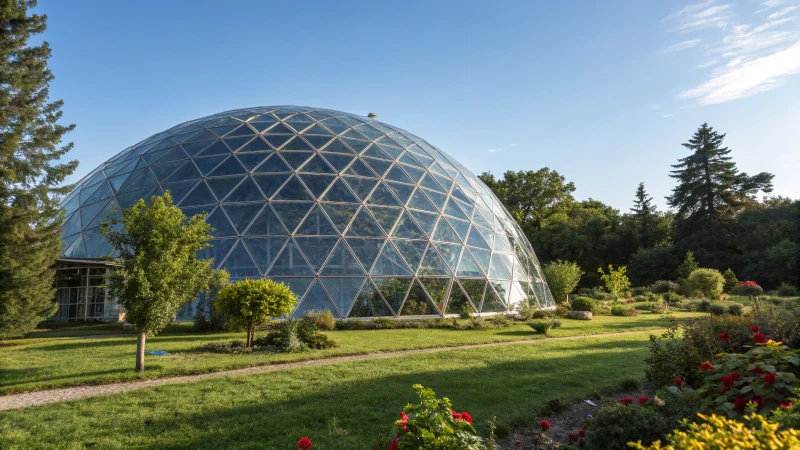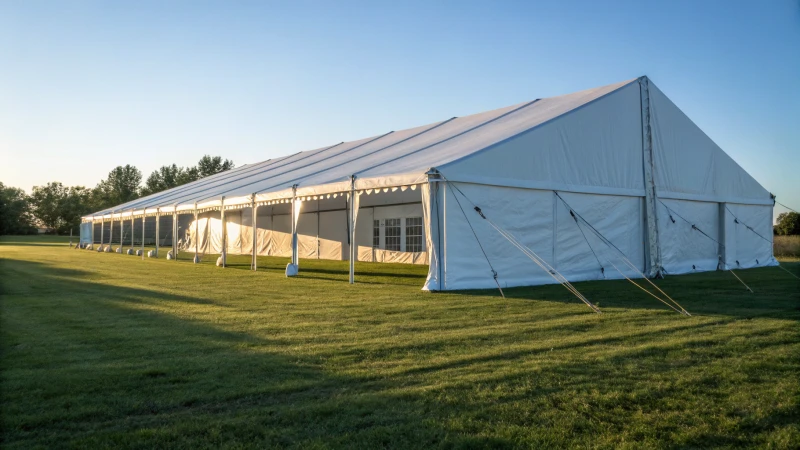
Have you ever thought about the unique charm and utility of geodesic domes in architecture?
Geodesic domes are spherical structures made from a network of triangles that distribute stress evenly, ensuring high stability with minimal materials. Popularized by Buckminster Fuller, they are celebrated for their strength, versatility, and energy efficiency. These domes find use in homes, event venues, agricultural setups, and disaster relief shelters.
While the basic idea of a geodesic dome might seem simple, its applications are anything but. From the first moment I stood inside one, I was struck by its open yet sturdy design. It’s like stepping into a new world where less really is more. Whether you’re considering one for a home or an event space, these domes offer creative solutions to many architectural challenges. Let’s explore why they could be perfect for your next venture.
Geodesic domes are made from hexagons.False
Geodesic domes are composed of triangles, not hexagons.
Buckminster Fuller conceptualized geodesic domes.True
Buckminster Fuller first conceptualized geodesic domes for structural efficiency.
What Makes Geodesic Domes So Strong?
Ever wondered why those futuristic-looking geodesic domes are so incredibly sturdy?
Geodesic domes are exceptionally strong due to their design, which uses interconnected triangles. This structure evenly distributes stress, allowing the dome to support heavy loads and withstand forces like wind and earthquakes.

The Role of Triangles in Structural Integrity
I remember the first time I really understood the power of triangles was during a camping trip. My tent kept collapsing until I fashioned a simple triangular support using some sticks. This small experiment opened my eyes to why triangles are the backbone of geodesic domes. In these domes, the interconnected triangles1 form a self-supporting network that evenly disperses stress, making them incredibly resistant to deformation.
Comparative Strength
| Shape | Stability | Load Distribution |
|---|---|---|
| Rectangle | Medium | Uneven |
| Triangle | High | Even |
| Circle | Moderate | Varies |
This table clearly shows how triangles offer superior stability and load distribution compared to other shapes, which is exactly why they’re a crucial element in dome design.
Efficiency Through Lightweight Construction
Despite their impressive strength, geodesic domes are surprisingly lightweight. Picture this: a massive structure that doesn’t need a heavy foundation or tons of materials. I once saw a team erect a dome at a festival in no time, and it was fascinating to see such a large space created with minimal resources and no heavy machinery. This lightweight construction2 means they can be built quickly without heavy machinery, which is beneficial in remote or emergency situations.
Energy Efficiency and Environmental Impact
The spherical shape of geodesic domes isn’t just for aesthetics; it actually reduces heat loss. When I was considering sustainable living options, I learned that these domes naturally regulate temperature, which can significantly cut down on energy consumption. Plus, using eco-friendly materials can lessen their environmental impact even further by minimizing their environmental footprint.
Versatility in Application
From homes to greenhouses, I’ve seen geodesic domes pop up in various places due to their adaptability. They serve as robust shelters in disaster zones and are even used in iconic structures like Spaceship Earth3 at Disney’s Epcot.
Real-World Examples
Take the Climatron greenhouse4 at the Missouri Botanical Garden—it’s not just about plants thriving inside but also about how the dome stands resilient against weather challenges. These real-world examples highlight how geodesic domes offer both durability and practicality across different fields.
Triangles maintain form under pressure in geodesic domes.True
Triangles are stable shapes that distribute stress evenly, enhancing dome strength.
Geodesic domes require heavy machinery for construction.False
Their lightweight design allows quick assembly without heavy machinery.
How Do Geodesic Domes Enhance Energy Efficiency?
Ever wondered how geodesic domes can keep your energy bills down? Their design does more than just look cool; it actually saves energy in ways you wouldn’t believe.
Geodesic domes boost energy efficiency with their spherical shape that reduces surface area, minimizing heat loss. This clever design allows for lighter construction, using fewer materials and conserving energy.

The Science Behind Geodesic Dome Efficiency
When I first stumbled upon the concept of geodesic domes, I was blown away by their ingenious design. Imagine a structure that’s not just visually striking but also exceptionally efficient. The magic lies in its spherical shape5, which cleverly minimizes the surface area. Fewer surfaces mean less heat escapes, making it easier to keep things cozy inside without cranking up the heat.
| Feature | Traditional Structures | Geodesic Domes |
|---|---|---|
| Surface Area | High | Low |
| Heat Loss | Significant | Minimal |
| Material Requirement | More | Less |
I remember visiting a friend who had built a geodesic dome for his family. Despite the chilly weather outside, the dome felt snug and warm, with minimal heating. The even distribution of stress across the structure allows for lightweight construction6, requiring fewer materials without skimping on strength.
Temperature Regulation and Insulation
Another aspect that truly fascinated me was how the dome naturally regulates temperature. Its curved surface encourages airflow, allowing warm air to rise and circulate effortlessly. This minimizes the need for artificial heating or cooling systems. The triangular panels create air pockets that serve as natural insulation, further boosting energy efficiency.
For instance, my friend’s dome was equipped with eco-friendly materials for insulation, proving that sustainability doesn’t mean sacrificing comfort. Builders often choose sustainable materials7 like recycled wood or bamboo, which further enhances the structure’s eco-friendly nature.
Versatile Applications and Benefits
These domes aren’t just limited to cozy homes; they’re making waves in various fields. From greenhouses to commercial spaces, their ability to maintain stable internal conditions is unmatched. Picture a greenhouse where plants thrive with minimal external help—geodesic domes make this possible by maximizing sunlight exposure and air circulation.
Reflecting on my own journey with sustainable architecture, geodesic domes stand out as a practical yet innovative choice. They not only reduce energy costs but also make a positive environmental impact by cutting down on carbon emissions. It’s no wonder they’re gaining traction among eco-conscious architects and homeowners alike.
Geodesic domes have a lower surface area than traditional homes.True
The spherical shape of geodesic domes minimizes surface area, reducing heat loss.
Geodesic domes require more materials than traditional structures.False
Even stress distribution in domes allows for lightweight construction, using fewer materials.
What Materials Are Best for Constructing Geodesic Domes?
Ever stared at a geodesic dome and thought, "What makes it stand so sturdy and look so captivating?
Steel, aluminum, and wood are top choices for constructing geodesic domes. Steel provides unmatched strength, aluminum is lightweight and resistant to corrosion, and wood offers eco-friendliness along with natural insulation.

Choosing the Right Material for Your Geodesic Dome
Ah, the allure of constructing a geodesic dome! It’s like piecing together a grand puzzle with the anticipation of seeing it all come together. Over the years, as I’ve dabbled in various construction projects, I’ve learned that selecting the right material is akin to choosing the perfect teammate for a mission. Each material has its strengths and quirks, and understanding these can make or break your project.
Below is a comparative analysis of popular materials:
| Material | Benefits | Drawbacks |
|---|---|---|
| Steel | Exceptional strength and durability. | Heavier and may require more tools for assembly. |
| Aluminum | Lightweight and resistant to corrosion. | More expensive than other materials. |
| Wood | Eco-friendly and offers natural insulation. | Requires treatment against pests and moisture. |
Steel: The Backbone of Strength
I remember working on a project in an area notorious for harsh winters. We opted for steel, not just for its resilience but because it felt like having a sturdy shield against nature’s elements. Despite the challenge of maneuvering its weight, knowing our structure would stand firm brought immense peace of mind.
Steel is a go-to choice for many due to its superior strength8. It ensures the dome can withstand severe weather conditions such as heavy snow or strong winds.
Aluminum: Lightweight Yet Robust
There was this one summer when we decided to try aluminum for a dome near the coast. Its lightweight nature made it a breeze to assemble, even in the salty air that usually spells doom for metals.
Aluminum’s primary advantage is its lightweight nature9, making it easier to handle during construction.
Wood: A Sustainable Choice
Wood has always held a special place in my heart. Its warm aesthetics and eco-friendly nature make it a favorite for many of my friends and colleagues.
Wood offers aesthetic appeal and sustainability10. It provides good insulation properties, which can be beneficial in both hot and cold climates.
Innovative Material Combinations
Mixing materials can sometimes be like crafting a perfect recipe; combining steel’s strength with wood’s charm can result in something truly special.
Combining materials can optimize your dome’s functionality by blending strength with eco-friendly elements11.
Considerations for Material Selection
- Purpose: Whether it’s a cozy home or a bustling greenhouse, understanding the intended use is crucial.
- Budget: Balancing cost against benefits — trust me, it’s worth every penny when done right.
- Environmental Conditions: Climate plays a big role; aluminum shines in humid areas.
- Aesthetic Preferences: Personal taste matters — some prefer wood’s rustic appeal, others lean towards the sleekness of metal.
Every choice is a step towards creating something magical. With careful consideration of cost, durability, and environmental impact, you can craft a geodesic dome that not only stands out but also stands strong.
Steel is the lightest material for geodesic domes.False
Steel is heavier than aluminum and wood, known for strength.
Wood requires regular maintenance to prevent decay.True
Wood needs treatment against pests and moisture to maintain integrity.
Can Geodesic Domes Withstand Extreme Weather Conditions?
Imagine sitting inside a geodesic dome as a storm rages outside, feeling utterly secure. Curious how these marvels hold up against nature’s fury?
Yes, geodesic domes are remarkably resilient in extreme weather conditions. Their triangular design disperses stress evenly, reducing damage from high winds, heavy snow, and earthquakes.

Understanding the Geodesic Structure
I remember the first time I saw a geodesic dome12. It was like stepping into another world—one where every angle seemed to support another, creating a harmony that felt both futuristic and reassuring. The strength of these domes is no accident. Their triangular design ensures that stress is evenly distributed across the entire structure, making them incredibly stable. Unlike traditional homes that might falter under pressure due to their reliance on vertical beams, each triangle in a dome works together, creating a network of support that stands firm against severe weather.
Performance in Hurricanes and Tornadoes
Living in an area prone to hurricanes made me skeptical at first. Could something so visually stunning really be that resilient? But the more I learned about geodesic domes, the more impressed I became. During hurricanes or tornadoes, their aerodynamic shape means winds flow around them rather than against them. The stories from dome homes in hurricane-prone areas13 are particularly compelling—showing how these structures often survive unscathed while neighboring homes suffer significant damage.
| Feature | Traditional Buildings | Geodesic Domes |
|---|---|---|
| Wind Resistance | Moderate | High |
| Snow Load Handling | Varies | Excellent |
| Earthquake Resilience | Limited | Superior |
Snow Load and Earthquake Durability
I once spent a winter in a mountainous region, where snow piled up faster than we could shovel it. It was then I truly appreciated the genius of the geodesic dome. These structures handle heavy snow effortlessly; the load is evenly spread across all those triangles, preventing stress concentration that could lead to collapse. Plus, their flexibility makes them perfect for earthquake-prone areas. The interconnected triangles form a lattice that absorbs and dissipates seismic energy effectively.
Reading about earthquake-resistant designs14 has only deepened my respect for these structures. They remain intact while conventional buildings buckle under the pressure of an earthquake.
The Future of Geodesic Domes in Extreme Climates
With climate change intensifying weather patterns, I find myself increasingly drawn to the idea of geodesic domes as a sustainable solution. Their energy-efficient design and robust construction offer unmatched durability and safety, whether used for homes, greenhouses, or research facilities in harsh environments. As these events become more frequent, I believe we might see a rise in their adoption as a means of mitigating risks associated with severe weather.
Geodesic domes can survive hurricanes better than traditional homes.True
Their aerodynamic shape reduces wind pressure and potential uplift.
Geodesic domes require vertical support beams for stability.False
They rely on interconnected triangles, not vertical beams, for strength.
Conclusion
Geodesic domes are strong, energy-efficient structures made from interconnected triangles, ideal for various applications like homes, event spaces, and disaster relief due to their stability and lightweight design.
-
Triangles provide stability and distribute force evenly, making them vital in architectural designs like geodesic domes. ↩
-
Using lightweight materials in construction enhances efficiency and reduces building time, especially useful for temporary structures. ↩
-
Discover diverse uses of geodesic domes, from homes to emergency shelters, showcasing their adaptability. ↩
-
Explore how the Climatron greenhouse utilizes geodesic dome design for botanical conservation. ↩
-
Learn how spherical shapes in architecture minimize surface area, reducing heat loss and increasing energy efficiency. ↩
-
Discover why lightweight construction materials save energy and resources, contributing to the efficiency of geodesic domes. ↩
-
Explore sustainable building materials that enhance energy efficiency and reduce environmental impact in geodesic dome construction. ↩
-
Understand the strength and durability benefits of using steel. ↩
-
Learn about the advantages of aluminum in construction. ↩
-
Discover sustainable material options for constructing domes. ↩
-
Find out how mixing materials can enhance dome functionality. ↩
-
Explore why geodesic domes are structurally advantageous and how their design contributes to their resilience against extreme weather. ↩
-
Discover case studies showcasing geodesic domes surviving hurricanes where other structures failed. ↩
-
Learn how geodesic domes provide superior earthquake resistance compared to traditional buildings. ↩







